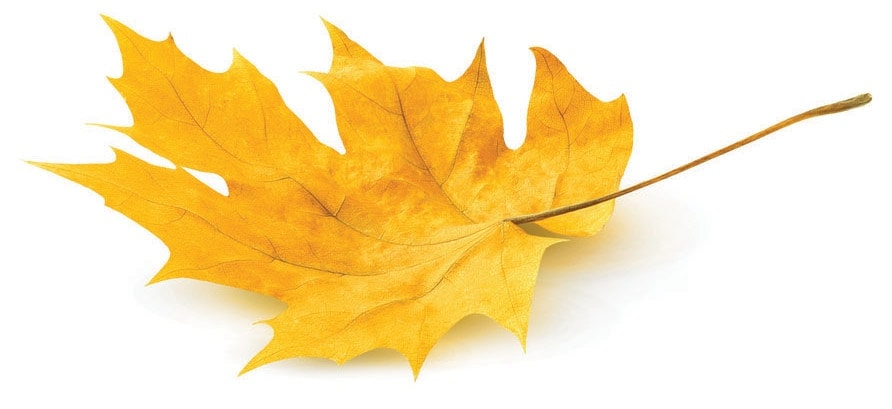
I have always enjoyed autumn weather. In Maryland, where we currently live, autumn offers a welcome reprieve from hot, humid summer days. The mighty maple and oak trees in our neighborhood present a colorful spectacle of green, yellow, red, and beige leaves. As I walk through one of our woodland neighborhood parks I relish the crunchy sounds my feet make as I walk through piles of leaves. I remember the exhilaration I felt as a child jumping into huge leaf piles and dumping leaves on my brother.
What is life-giving to me, and how can I focus on those relationships in my life that I need and want to grow?
I recently learned a new word. Abscission describes the act of cutting off something. In biology it is used to describe the shedding of leaves, flowers, and fruit following the formation of an abscission layer.* The leaves of trees contain three main pigments: carotene, anthocyanin, and the photosynthetic pigment, chlorophyll, which helps the plant to synthesize energy from the sun. Since chlorophyll is the most abundant pigment, leaves are generally green.
But there is another important chemical in leaves called auxin. Auxin controls a special band of cells at the base of each leaf that is called the abscission layer. The shorter autumn days cause the leaf to produce less auxin, which in turn allows the abscission layer to grow and cut off the circulation of water, nutrients, and sugar to the leaf. Since chlorophyll disintegrates rapidly, the leaf’s other pigments become more visible, resulting in the yellow and red hues we love.
Abscission is part of God’s design to keep trees healthy and prepared for winter. No fungus or infection can enter the tree because of the abscission layer. Water and nutrients are stored in areas that cannot easily be affected by frost. Letting go often results in real growth.
Autumn is a good moment to consider the important things in our lives. We mostly live in add-on mode. Our lives get fuller and fuller. Our calendars don’t show many empty spaces. We live from project to project, or, in my role as an editor, from deadline to deadline. Incessive busyness and distraction mark our times. Whether virtually or in the real life separate from our screens, we run and rush, driven by ambition or duty or necessity.
Falling leaves remind us to refocus on first things. What is important and what can be reduced or even cut off? Where can we find shelter from our busyness and regain strength, energy, and vision? What is life-giving to me, and how can I focus on those relationships in my life that I need and want to grow?
Sometimes these questions result in radical change. Others choose to reduce gradually. Like a tree preparing for winter and a new life cycle of another spring and summer, we too are invited to practice the abscission principle in order to remember, once again, what really counts. David’s words encouraging his people to build the temple summarize it well: “Now set your mind and heart to seek the Lord your God” (1 Chron. 22:19, NRSV).
* Cf. “Curiosities: Why Do Leaves Change Color in the Fall?” University of Wisconsin-Madison News, Oct. 11, 2007, online at https://news.wisc.edu/curiosities-why-do-leaves-change-color-in-the-fall/.
Gerald A. Klingbeil serves as an associate editor of Adventist Review Ministries.